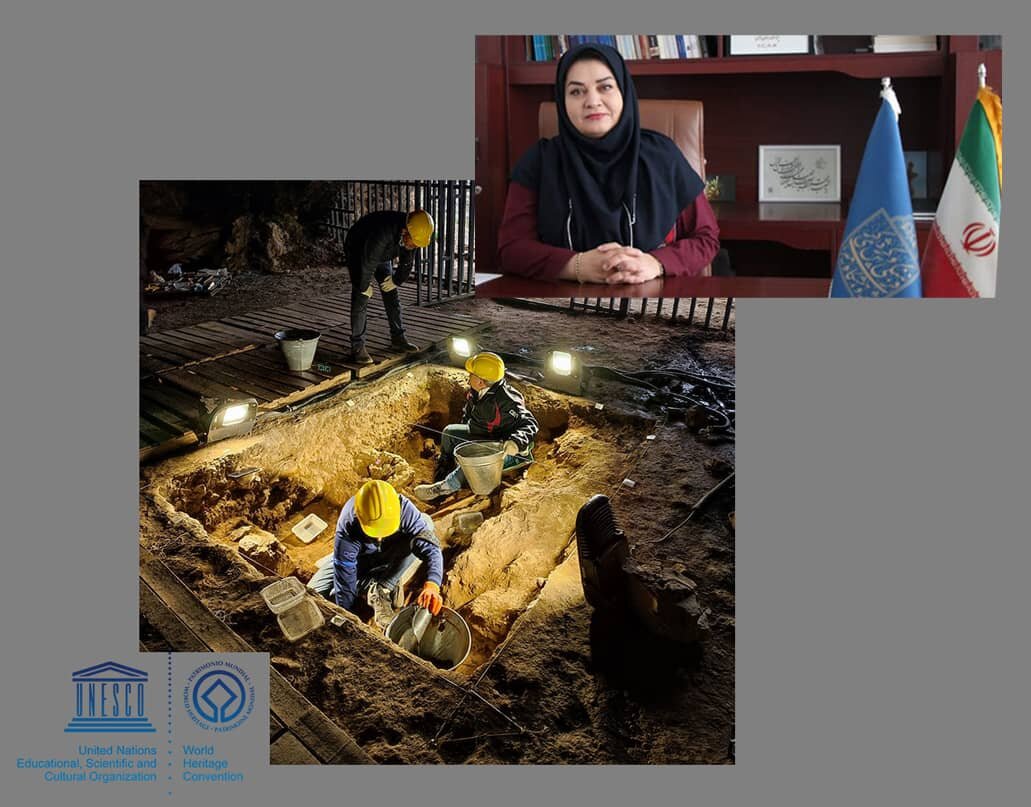World Heritage listing validates Iran’s commitment to preserving Paleolithic past

TEHRAN – The recent inscription of the Prehistoric Sites of Khorramabad Valley on UNESCO’s World Heritage List marks a significant achievement for Iranian archaeology, capping over fifty years of dedicated research and excavation.
In an interview with the Tehran Times, Dr. Masoumeh Mosala, Director of the Iranian Center for Archaeological Research (ICAR), emphasized the importance of the UNESCO designation.
“This designation is a landmark achievement. It validates the enduring importance of archaeological study, highlighting our discipline’s critical role in gaining international recognition and securing the long-term protection of ancient sites.”
“This inscription reflects more than half a century of systematic excavations and scientific inquiry,” she underlined.
Talking about the efforts made to develop a professional file for a UNESCO nomination, Mosala said: “The nomination dossier was meticulously developed, drawing on comprehensive research at major sites including Yafteh, Ghamari, Kaldar, Gilvaran, Gar Arjeneh, and Kunji caves.”
The sites were inscribed under UNESCO Criterion (iii), recognizing their outstanding testimony to the cultural traditions of early modern humans. Dr. Mosala emphasized the significance of key discoveries -- such as perforated shell and deer-tooth ornaments from Yafteh Cave (dating to 40,000–30,000 years ago) and recent evidence of Neanderthal occupation in Ghamari Cave --as “vital to understanding human adaptation during the Paleolithic period in the Zagros region.” These findings, she added, demonstrate a high level of cognitive and cultural complexity that could only be revealed through rigorous archaeological science.
“A successful UNESCO nomination is not an administrative task—it’s a scholarly achievement,” Mosala said.
“It requires deep expertise in stratigraphy, material culture, and both regional and global context. Only archaeologists can synthesize decades of data, articulate their significance, and respond effectively to technical evaluations, as was exemplified in this dossier.”
She also stressed the strategic strength of a multi-site nomination rooted in archaeology: “By presenting a network of caves and rock shelters—spanning Neanderthal, early Homo sapiens, and later occupations—the Khorramabad nomination offered a cohesive narrative of human presence. That kind of integrative story can only be told through archaeology.”
Dr. Mosala affirmed that this achievement raises Iran’s profile in global Paleolithic heritage, aligning it with leading nations such as France and China. However, she warned that World Heritage status is only the beginning: “With international recognition comes greater responsibility—to protect these sites and to deepen interdisciplinary research. This is an opportunity to push the frontiers of our understanding of human history in the Zagros.”
In conclusion, she called for expanded collaboration and sustained investment: “The success of the Khorramabad dossier sets a standard. It shows that long-term, high-caliber archaeological work—combined with expert engagement in the heritage process—can yield transformative results. This moment should inspire new partnerships, increased research funding, and a renewed commitment to preserving Iran’s unique legacy in the story of humanity.”
AM
Leave a Comment